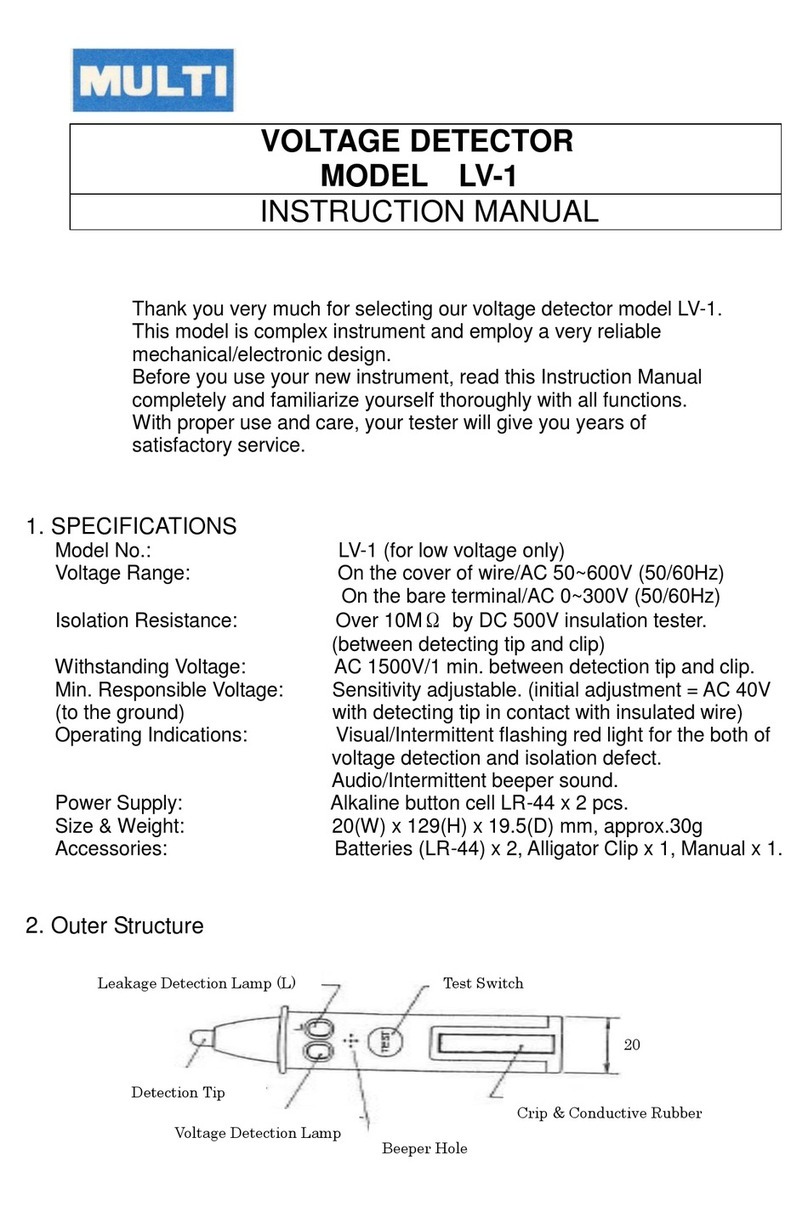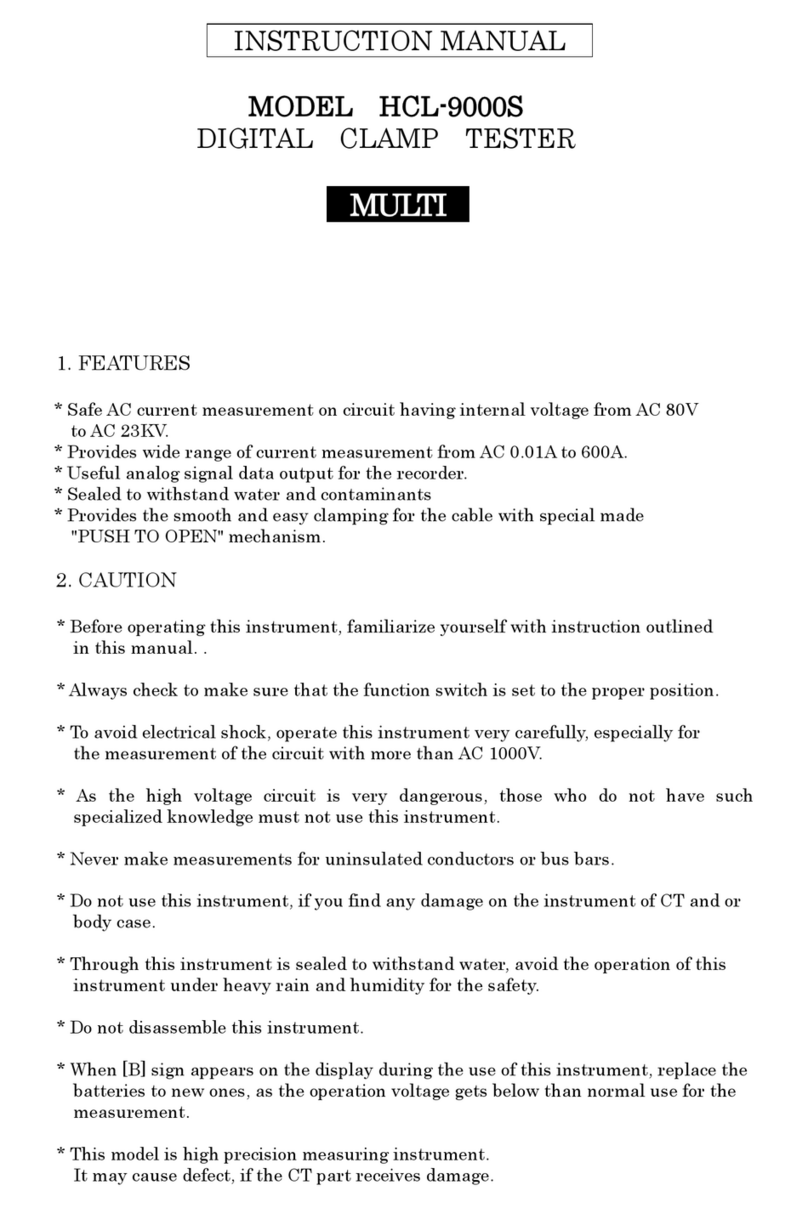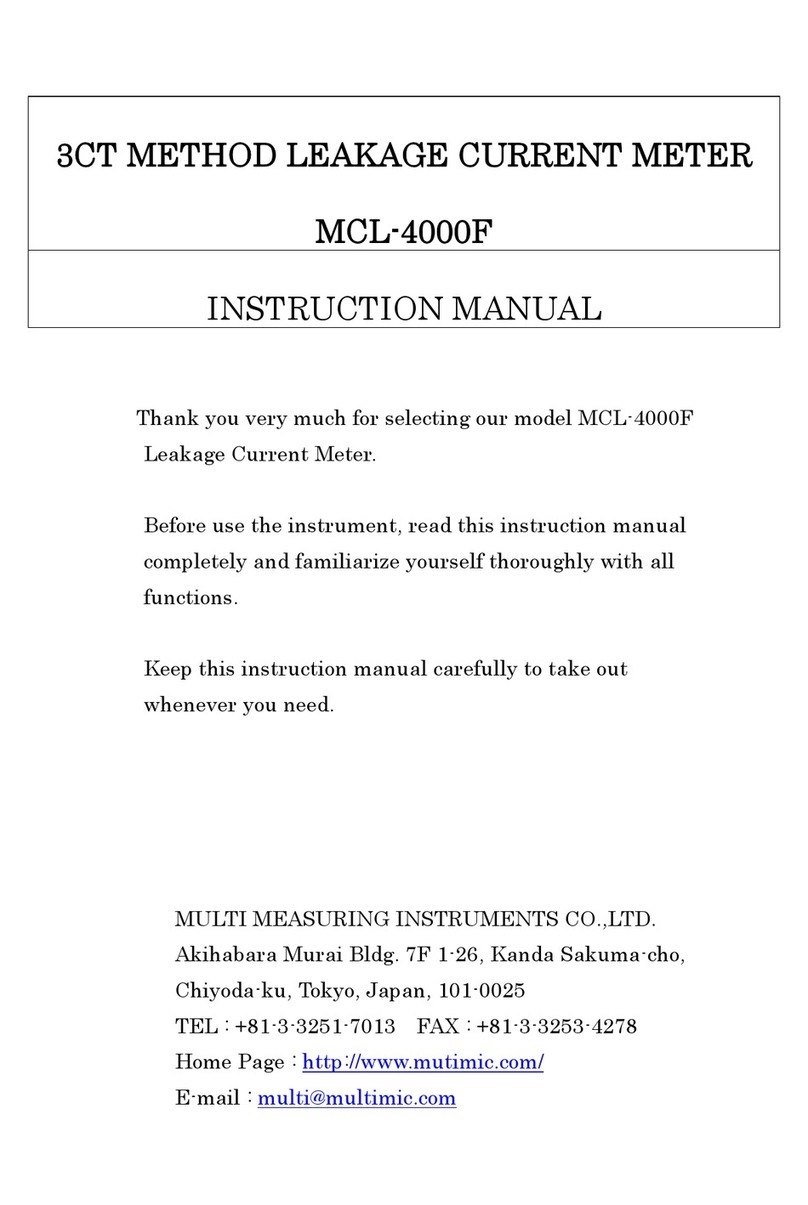SPECIFICATIONS
1. CURRENT DETECTION ZCT
Inside diameter : Φ40mm
Method : Split core type ZCT
Withstanding voltage : AC 2200V/1 minute between CT core and grip
2. MEASURING PART
Measuring function : Leakage current (Io), Line current (I),
Resistive leakage current (Ior), AC Voltage (V)
Measuring method : Clamp CT (in case of Ior, based on voltage standard
to be inputted directly or by non-contact voltage
sensor)
Measuring range : Io, Ior: 40mA/400mA/4A
I: 40mA/400mA/4A/40A/500A
V: 500V
Input frequency range : 50Hz/60Hz (auto)
AC current detection : I,Io,V: True RMS by analog operation
Ior: RMS by synchronous dual integration mode
AD conversion : Successive approximation method
Display change : By rotary switch
Display : LCD, max.9999 reading with annunciator
Data hold indication : “DH”mark on LCD
Sampling rate : 2 times/sec.
Overrange indication : “OL”mark on LCD
Low battery indication : "B" mark on LCD
Auto power off :Approx. 10 minutes after power on
Filter/V Input Switch :When pressing this switch once at I, Io current
measurement, “FL” mark on LCD and high
frequencies are cut off. By pressing once again, this
function will be released. In case of Ior measurement,
this switch is ineffective.
By pressing this switch at Ior measurement, “Direct
Voltage Input” or “Non-contact Voltage Input” can be
selected. [Ld] mark on the right upper side of display
means direct voltage input and [no] display shows
non-contact voltage input.
Ior Switch : In case of measuring Ior current, press this switch
and then, set the circuit condition to be measured by
Ior SELECT switch.
Circuit voltage : less than 600V (isolated wire)
Operating temperature : 0~40oC < 85%RH (without condensation)
Storage temperature : -10~60 oC < 70%RH (without condensation)
Consumption current : 13mA (approx. 48h for continuous use)
Power supply : AAA alkali battery LR03×3
Dimension/Weight : 70(W)×223(H)×34(D)mm, approx. 440g
Accessories : Battery LR-03 (installed into the instrument)/3pcs.
Carrying Case/1pce., Instruction Manual/1pce.
Test Lead for direct voltage input/1set
Non-contact voltage input sensor/1pce.






























